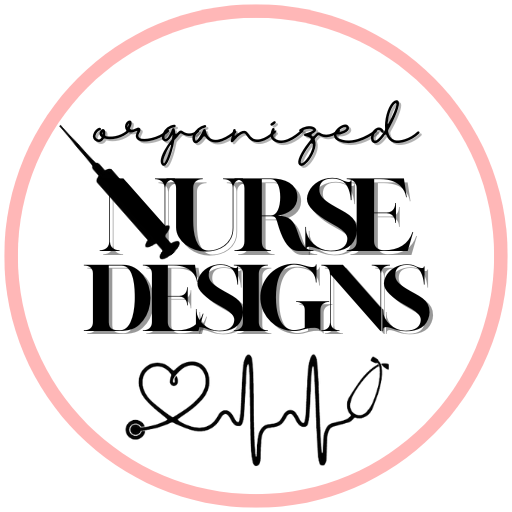Medical-surgical class in nursing school requires you to integrate your knowledge of pharmacology, pathophysiology, and health assessment into your studies.
This nursing course covers disease processes and how a nurse would provide care for a particular patient under those circumstances. Additionally, critical-thinking NCLEX style questions are included in medical-surgical exams. On the other hand, you are probably used to other courses' exams that consist of knowledge-based questions.
Simply memorizing information will not be beneficial on exams since medical-surgical nursing demands you to thoroughly comprehend the content. For instance, students are expected to understand the pathophysiology of edema and dyspnea in patients with congestive heart failure.
Furthermore, applying pharmacology concepts can help you understand why the patient was prescribed Lasix and the importance of monitoring their potassium levels while taking this medication. Remember, the goal of this course is to get you to "think like a nurse!"
Step #1: Learning Style
To effectively study in nursing school and retain the information, it is vital to know how you learn best. The first step is to find out what type of learner you are:
- Visual: You retain info best by watching videos or seeing visuals like charts, diagrams, and other design elements. You can watch YouTube videos on the concepts you're studying or draw the concept to have a visualization.
- Auditory: If you learn best by listening, may be helpful to read your notes out loud or re-listen to recorded lectures.
- Read/write: You succeed by focusing on written information. These learners tend to write detailed notes during lectures and re-write them later on. Concept maps not only help visual learners but also those who learn by writing. Repetition is key!
- Kinesthetic: Hands-on learners thrive by using their senses and experiencing or acting out scenarios. One method is to invest in a whiteboard and write out your notes. You can also get up and move around while studying to stay active.
Step #2: Understanding Pathophysiology
- What is happening in the body?
- What is wrong or needs to be fixed?
- Why is the patient experiencing this? Understanding the disease process will help you learn the risk factors, manifestations and nursing interventions
Example: Left-sided heart failure patho → Ineffective left ventricular contractility → left ventricle fails to pump blood → decreased cardiac output → blood backs up into atrium & lungs → pulmonary congestion, dyspnea, activity intolerance, pulmonary edema
Step #3: Signs and Symptoms
- It is impossible to know every sign and symptom of every disease-know what to focus on...
- Focus on the MOST fatal symptoms and know what you need to assess for in this patient
- Which symptom would result in harm to the patient?
*TIP: When studying for med surg in nursing school, many of the concepts are opposites i.e. left vs. right-sided heart failure. The best way to learn and understand them is by making a side-by-side comparison. Whether it's a venn diagram or dividing a paper in two, having a visualization of the similarities and differences will help you learn beyond your classroom's PowerPoints.
Example: We know that a patient with left-sided heart failure will present with lung symptoms due to fluid overload in the lungs. This means that the patient will present with difficulty breathing, cough, crackles & pulmonary edema (symptoms associated with the lungs).
TIP: To help you recognize left-sided heart failure symptoms, think LEFT = LUNG symptoms.
Step #4: Patient Education and Nursing Interventions
Now that you know what's happening in the body and what's wrong, what are you going to do to help this patient? What would you teach to prevent this from recurring? Focus on the safety interventions and patient education!
Example: To help the patient breathe, we would anticipate the Provider will order a diuretic such as Lasix to flush out the fluid in their lungs. How would we know if the diuretic is working or if it has no effect on the patient?
- We need to check their weight daily. If they’re gaining >2 lbs a day, this means the Provider has to ↑ their diuretic.
- We’ll also need to assess lung sounds for crackles. Clear lung sounds will indicate that the patient is breathing better & that the diuretic is effective.
- We need to teach to restrict fluids because if they already have too much in their body, we don’t want them to take in even more!
Conquer Med-Surg Nursing with Concept Maps
One tool that I absolutely live by (along with many other students) are concept maps. Creating concept maps will help you comprehend and retain different disease processes in med surg. Below is an example of a med-surg nursing concept map I made for congestive heart failure:

Get your own concept maps to help you ACE med-surg! I've created over 20 different printable nursing study templates for you to choose from. Instant download and printable PDF files to help you get started right away!
Click below to get your templates:
Related Posts

Anticholinergic Drugs vs. Cholinergic Drugs Simplified for Nursing Students
To help you remember anticholinergic and cholinergic drugs: Remember SEE, SPIT, SHIT (Excretion). Cholinergic drugs = " can SEE, can SPIT, and can SHIT (plus urinate)" Anticholinergic drugs = "can’t SEE, can't SPIT and can't SHIT"

Cardiac Glycosides Simplified: Inotropic, Chronotropic, and Dromotropic Drugs
Cardiac glycosides are a class of medications that are derived from plants, used to treat various cardiovascular conditions, including heart failure and certain arrhythmias. The primary mechanism of action of cardiac glycosides is to increase the force of contraction of the heart muscle.

Join Our Nursing Club
Free study guides, nursing school tips, and stories delivered right to your inboxSecure Checkout With

Copyright © 2023 OrganizedNurseDesigns. All Rights Reserved.

